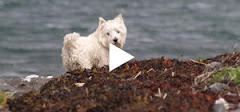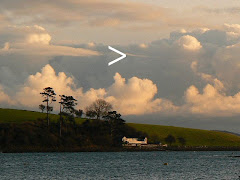
The presence in Strangford Lough this week of a leatherback turtle has caused quite a stir, because it’s rare enough to see turtles in these parts, but particularly at this time of year when jellyfish, their staple diet, are scarce.
A few facts about leatherbacks (Dermochelys Coriacea):-
They breed in rookeries in tropical waters – Central and South America, and West and South Africa.
Leatherbacks migrate enormous distances to cooler waters in search of food (primarily jellyfish) – in 2007 the US National Maritime Fisheries Service tracked a tagged female leatherback from the western to the eastern Pacific and part way back, a total of 12,700 miles.
Leatherbacks are the most widely distributed marine reptile on the planet.
They can grow to an enormous size: 9ft from left to right front flipper, and 1200 lbs in weight.
The World Conservation Union considers the leatherback to be an endangered species.
Nesting turtles are sometimes killed for meat, and their eggs harvested.
The creatures are particularly vulnerable to entanglement in fishermen’s nets and lines - the leatherback in Strangford Lough was hooked by a fly on the carapace, by local angler Andy Elliot, who released it unharmed before spending an hour paddling alongside in his sea kayak.
Uniquely among marine reptiles, the leatherback turtle has some internal control of its body temperature, which is why it is sometimes found in such relatively cool waters.
Apparently this particular turtle may have been blown off course by recent storms. Everyone is hoping for the best, but I can't help thinking it would be less worrying if it had appeared a few weeks hence, when large shoals of jellyfish come into the lough.
To see a video of a female leatherback making a nest and laying her eggs go to: http://www.arkive.org/species/GES/reptiles/Dermochelys_coriacea/Dermochelys_coriacea_09a.html?movietype=rpMed














